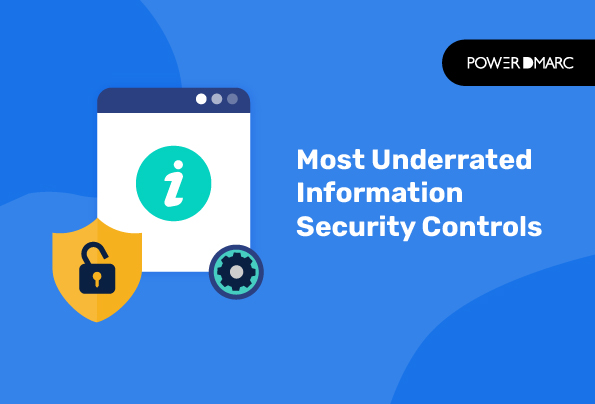Underrated Information security controls are the activities, procedures, and mechanisms that you put in place to protect yourself from cyber threats. Your information security controls can be something as simple as using a VPN to connect to your company’s network or something more complicated like encrypting your data with a key management system.
What is an Information Security Control?
Information security controls are the different ways you can protect your company’s data. They can be technical, physical, or administrative. They serve as a defense against outside threats and internal threats alike.
You can think of information security controls like fences around a house. The fence keeps people out of your yard and protects your property from outside threats like thieves who want to steal your stuff or vandals who want to damage it. In this analogy, “your stuff” would be your data and its integrity.
3 Major Categories of Information Security Controls
The best way to protect your data is to implement all three types of information security controls:
- Physical controls are things like locks on doors, strong firewalls, and cameras in offices.
- Technical controls include encryption and software that monitors access to files on your computer or network.
- Administrative controls include policies like password expiration requirements, user education programs, and regular audits.
- Compliance controls Which include information security standards, frameworks, and protocols
List of the Most Underrated Information Security Controls
Information Access Control
Information access control is the process of controlling access to information by authorized personnel. It can be used to protect sensitive and confidential data, as well as protect against identity theft and unauthorized disclosure of information.
Information access control is typically implemented using a combination of hardware and software solutions. One type of hardware solution is called perimeter security, which involves placing physical barriers between an organization’s network and the Internet. This can include firewalls, routers, and other devices that are designed to prevent unauthorized access from outside sources.
2. Multifactor Authentication
Multifactor authentication (MFA) is a method of confirming your identity when logging in to a computer or web application. It’s an extra layer of security that provides greater protection against unauthorized access. It uses at least two of the following three elements:
- Something you know (like a password)
- Something you have (like a physical device)
- Something you are (like biometrics like your fingerprint, voice, or facial features)
3. Email Authentication
Email authentication is a process that ensures that the sender of an email is who they say they are. It’s a way to verify that emails aren’t being sent by someone pretending to be from your company or organization.
You can set up email authentication for your domain name in two ways: Sender Policy Framework (SPF) and Domain Keys Identified Mail (DKIM). After you have set up protocols to verify the authority of your email senders, you need a way to instruct email receivers how to respond to emails failing these checks. This is where a DMARC policy comes into use. You can configure a suitable policy to reject, quarantine, or accept the messages depending on their authentication status.
4. Information Security Training Programs
Information security training programs are a great way to help your employees prevent security breaches. They can also be used to give employees the tools they need to handle potential breaches and keep them from happening again.
These types of training programs are not just for IT professionals—they’re for everyone in your organization. All employees should take part in information security training programs because they’re so important for keeping your company’s data safe and secure.
Conclusion
The term “information security” refers to the protection of data in any form. This includes physical protection of data storage devices like hard drives or flash drives as well as digital protection through encryption and other methods of securing data from unauthorized access. Having an effective information security policy in place can help you evade security breaches that can damage your brand’s reputation and credibility in the long term.
- Can Blockchain Help Improve Email Security? - May 9, 2024
- Datacenter Proxies: Unveiling the Workhorse of the Proxy World - May 7, 2024
- Kimsuky Exploits DMARC “None” Policies in Recent Phishing Attacks - May 6, 2024
